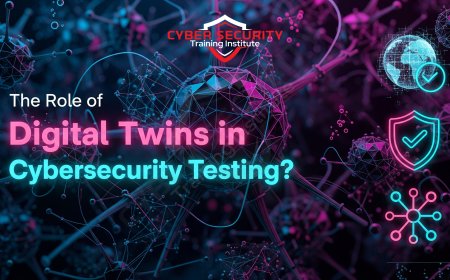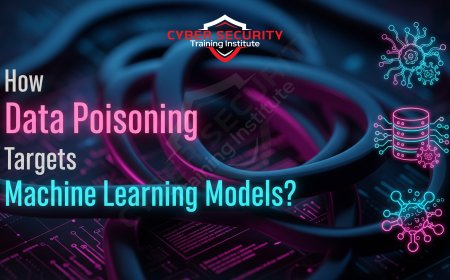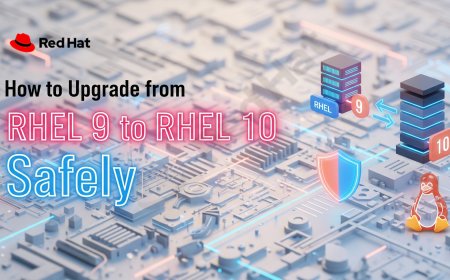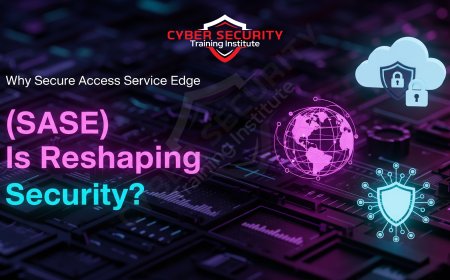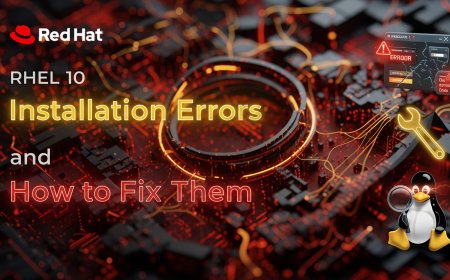What Role Are Autonomous Recon Bots Playing in Enterprise Breaches?
In 2025, autonomous recon bots are playing a critical role in enterprise breaches by automating the entire reconnaissance phase of an attack. These AI-powered tools provide attackers with a real-time map of a target's digital attack surface, intelligently identifying vulnerabilities, misconfigurations, and human targets to pinpoint the path of least resistance. This detailed analysis explains the role and capabilities of these intelligent bots, comparing them to traditional manual methods. It breaks down the drivers behind this growing threat and provides a CISO's guide to the necessary defensive posture, which is centered on a proactive, continuous Attack Surface Management (ASM) strategy.
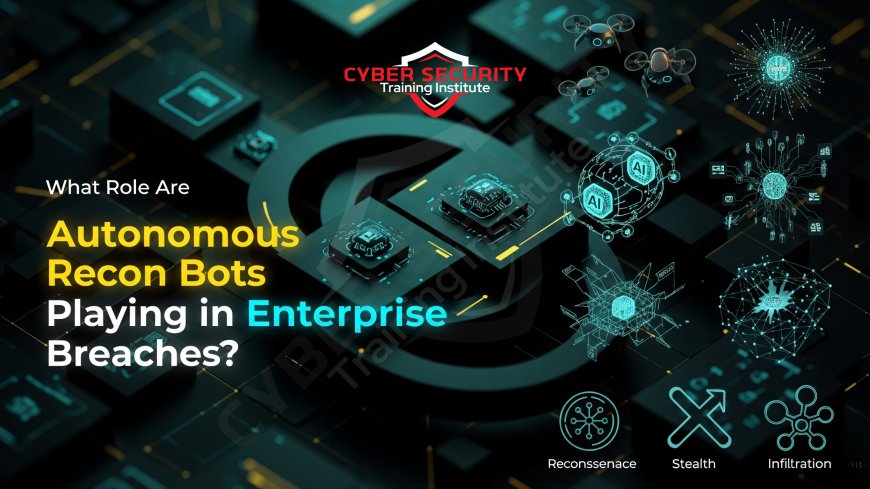
Table of Contents
- The New Scout: AI as the Tip of the Spear
- The Old Way vs. The New Way: The Manual Scout vs. The AI Drone Fleet
- Why Autonomous Recon is a Game-Changer in 2025
- Anatomy of an Attack: An Autonomous Reconnaissance Campaign
- Comparative Analysis: The Capabilities of Autonomous Recon Bots
- The Core Challenge: Defending Against a Continuous, Automated Adversary
- The Future of Defense: Attack Surface Management and Proactive Security
- CISO's Guide to Countering Automated Reconnaissance
- Conclusion
- FAQ
The New Scout: AI as the Tip of the Spear
In August 2025, autonomous recon bots are playing the absolutely critical role of the advanced, intelligent scout in enterprise breaches. Their primary function is to automate and dramatically scale the entire reconnaissance phase of an attack. These AI-powered bots provide threat actors with a comprehensive, real-time map of an organization's digital attack surface. More importantly, they intelligently identify the most promising paths of least resistance, effectively handing the human attacker a ready-made blueprint for a successful breach and significantly lowering the time and skill required to launch a sophisticated attack.
The Old Way vs. The New Way: The Manual Scout vs. The AI Drone Fleet
Traditional reconnaissance was a manual, painstaking effort. A human hacker or a small team would use a disparate collection of tools—a port scanner here, a web scraper there, a DNS enumeration script—to slowly piece together a picture of the target. It was an incomplete, point-in-time snapshot that was often outdated by the time it was finished.
The new autonomous recon bot is a unified, intelligent, and continuous platform. The difference is like that between a single scout with a spyglass manually sketching a map of an enemy fortress, versus a fleet of thousands of autonomous drones that scan every inch of the fortress, its supply routes, and even profile the guards' patrol schedules, all simultaneously and in real-time. The AI bot provides a complete, dynamic, and multi-dimensional view of the target's weaknesses.
Why Autonomous Recon is a Game-Changer in 2025
The rise of these bots is driven by the realities of the modern digital landscape.
Driver 1: The Exploding and Dynamic Attack Surface: The mass adoption of cloud services, IoT devices, and remote work policies by enterprises, including the thousands of tech companies in Pune, has caused the corporate attack surface to become vast, constantly changing, and too complex to map manually.
Driver 2: The Need for Speed and Stealth: The window of opportunity to exploit a new vulnerability is shrinking. Attackers need to find a weakness faster than defenders can patch it. AI automation provides this speed. Furthermore, advanced bots can perform "low and slow" scanning from thousands of distributed IP addresses, making their activity look like normal internet background noise and evading simple IP-based blocking.
Driver 3: The Accessibility of AI and Public Data: The availability of powerful open-source AI frameworks and the ocean of public data—from social media, data breach compilations, and developer forums—provides the fuel and the engine for these bots to operate effectively and at low cost.
Anatomy of an Attack: An Autonomous Reconnaissance Campaign
A typical campaign executed by one of these bots is a model of efficiency:
1. Target Definition: An attacker simply points the bot at a target corporation.
2. External Asset Discovery: The bot begins by mapping the company's entire digital footprint. It discovers all associated domains and subdomains, web servers, cloud storage buckets, developer repositories on GitHub, and VPN gateways.
3. Vulnerability and Human Profiling: The bot then actively probes these discovered assets for weaknesses, such as outdated software with known CVEs, default credentials, or common cloud misconfigurations. Simultaneously, it scrapes professional networking sites like LinkedIn to identify key employees in roles like "System Administrator" or "Finance Manager."
4. Attack Path Synthesis: This is the AI's most critical function. It correlates all the data it has gathered. For example, it might find an unpatched VPN server (a technical flaw) and, through its human profiling, identify 30 employees who are listed as working remotely. It then presents its human operator with a high-confidence conclusion: "The optimal attack vector is a spear-phishing campaign against these 30 users with a link to a fake VPN login page to steal credentials."
Comparative Analysis: The Capabilities of Autonomous Recon Bots
This table highlights how AI has upgraded each phase of the reconnaissance process.
| Reconnaissance Function | Traditional Method | AI-Powered Bot Method (2025) | Impact on Attackers |
|---|---|---|---|
| Attack Surface Mapping | Manually running tools like Nmap and DNS scrapers; a slow, point-in-time, and often incomplete process. | Continuously and automatically discovers all internet-facing assets, including forgotten "shadow IT" subdomains and cloud services. | Provides a complete, comprehensive, and real-time view of the target's entire digital footprint to probe for weaknesses. |
| Vulnerability Identification | Running separate, noisy vulnerability scanners against a static list of known CVEs. | Intelligently probes for not just known CVEs but also for subtle cloud misconfigurations and logical application flaws. | Finds a much wider range of security weaknesses, including the low-hanging fruit of misconfigurations that are often the easiest to exploit. |
| Human Target Profiling | Manually searching LinkedIn and other social media sites for key employees to target in a phishing campaign. | Automatically scrapes and correlates data from numerous sources to build detailed profiles of high-value human targets and their roles. | Enables the creation of highly effective, personalized, and believable social engineering lures for the next stage of the attack. |
| Attack Path Analysis | A human analyst must manually connect the dots between a discovered technical flaw and a potential human target. | The AI automatically correlates all discovered data points to identify and rank the most probable and easiest paths to a successful breach. | Drastically reduces the time and, more importantly, the expertise needed to plan a sophisticated, multi-stage attack. |
The Core Challenge: Defending Against Automated, Continuous Discovery
The core challenge for defenders is that they are now facing a persistent and automated adversary that is continuously looking for a single mistake. In the past, a developer might accidentally expose a new server or a cloud storage bucket, but it might go unnoticed for days or weeks. Today, an autonomous recon bot, which is always scanning, will likely find that exposure in a matter of hours or even minutes. The defense must be as continuous and automated as the offense has become.
The Future of Defense: Attack Surface Management and Proactive Security
The only viable defense against offensive recon bots is to deploy a defensive recon bot. This is the principle behind modern Attack Surface Management (ASM) platforms. These are AI-powered tools that do exactly what the attacker's bot does: they continuously and autonomously map an organization's external footprint from an attacker's perspective, finding exposed assets, vulnerabilities, and misconfigurations. The goal is for the organization's defensive bot to find the weakness and alert the security team before the adversary's malicious bot finds the very same flaw.
CISO's Guide to Countering Automated Reconnaissance
CISOs must adopt a proactive, outside-in view of their organization's security.
1. Assume You Are Being Continuously Scanned: Your security strategy must start with the assumption that your entire digital footprint is being continuously and intelligently probed by automated adversaries 24/7.
2. Make Attack Surface Management (ASM) a Foundational Control: You cannot secure what you do not know you have exposed. A comprehensive, automated ASM solution is no longer a "nice-to-have" but a foundational requirement for any modern security program. You must have a real-time inventory of all your internet-facing assets.
3. Aggressively Reduce Your Attack Surface: The ultimate defense is to have fewer targets. The intelligence from your ASM platform should be used to drive a ruthless campaign to reduce your attack surface. Implement strict policies to regularly decommission unused servers, services, and cloud resources.
Conclusion
Autonomous recon bots have transformed the initial, critical phase of a cyber attack from a slow, manual art into a fast, efficient, and automated science. By providing attackers with a complete and continuously updated blueprint of an enterprise's weaknesses and most promising attack paths, these bots are setting the stage for faster, more frequent, and more successful breaches. The only effective defense is to adopt a similar, AI-powered proactive posture, using Attack Surface Management to continuously discover and remediate one's own weaknesses before the adversary does.
FAQ
What is reconnaissance in cybersecurity?
Reconnaissance (or recon) is the first stage of an attack, where the threat actor gathers as much information as possible about their target to identify vulnerabilities and plan their method of infiltration.
What is an attack surface?
An organization's attack surface is the complete set of all its internet-facing assets and potential points of entry that are exposed to attackers. This includes servers, applications, cloud services, and employees.
What is Attack Surface Management (ASM)?
ASM is the continuous process of discovering, analyzing, and securing all the assets that make up an organization's attack surface from an external, attacker's perspective.
How is an AI recon bot different from a normal vulnerability scanner?
A normal scanner typically looks for a predefined list of known vulnerabilities. An AI recon bot is more holistic; it not only finds vulnerabilities but also maps assets, discovers misconfigurations, and profiles human targets, then correlates that data to find the best attack path.
What is "low and slow" scanning?
It is a technique where a bot performs its scanning activities very slowly and from a large number of different IP addresses to make its traffic blend in with normal internet "background noise" and evade simple detection rules.
What is a "digital footprint"?
It is the entire collection of an organization's digital assets that are accessible on the internet, including both official, sanctioned assets and forgotten or unauthorized "shadow IT" assets.
What is a cloud misconfiguration?
It is a setting in a cloud service that is not configured according to security best practices, such as a cloud storage bucket being left publicly exposed or a database having a default password.
How do these bots profile employees?
They automatically scrape public information from professional networking sites like LinkedIn, data from breach compilations, and even social media to identify employees with privileged access (like IT admins) who can be targeted with phishing.
What is an attack path?
An attack path is a sequence of steps or vulnerabilities that an attacker could chain together to move from an initial entry point to a high-value asset, like a critical database or a domain controller.
Is this type of recon illegal?
Passive reconnaissance, which involves gathering publicly available information, is generally not illegal. However, active probing and scanning of a network you do not own, without permission, is illegal in most jurisdictions.
How can a bot find "forgotten" servers?
It can use techniques like scanning entire IP address ranges associated with a company or looking through historical DNS records to find subdomains and servers that the IT department may have set up for a temporary project and forgotten to decommission.
What is the role of the human attacker?
The human attacker acts as the supervisor. The bot provides them with a prioritized list of the best potential attack vectors, and the human then chooses which one to exploit for the next stage of the attack.
Are these bots expensive for attackers?
No. Many are built using open-source AI frameworks, and the cost of cloud computing to run them can be relatively low, making them highly accessible.
Does a firewall protect against this?
A firewall is a critical part of the defense, but a recon bot is specifically looking for the small number of ports and services that are *intentionally* left open on the firewall to allow for legitimate business (like a web server or a VPN) and then probing those for weaknesses.
What is the most important defensive strategy?
Proactive, continuous visibility. You must have an automated system (like an ASM platform) that gives you a complete and up-to-the-minute inventory of your entire external attack surface.
How does this affect small businesses (SMBs)?
SMBs are often at higher risk because they are less likely to have a complete inventory of their assets and may have more forgotten or insecurely configured services, making them easy targets for these automated bots.
What is a "force multiplier" for an attacker?
It is a tool or technique that allows a single attacker or a small team to achieve the same impact as a much larger, better-resourced team. AI recon bots are a classic example of this.
Can you detect these bots?
It is difficult. While very noisy scanning can be detected, advanced bots that use "low and slow" techniques from many different IPs are very hard to distinguish from legitimate internet traffic.
What is the role of a CISO regarding this threat?
The CISO's role is to champion a proactive, "outside-in" security strategy. They must secure the budget and resources for a continuous Attack Surface Management program.
How do I start with ASM?
Many cybersecurity vendors offer ASM solutions. The first step is to engage a vendor for a trial or a one-time scan, which can provide an immediate snapshot of your organization's currently exposed assets and vulnerabilities.
What's Your Reaction?
 Like
0
Like
0
 Dislike
0
Dislike
0
 Love
0
Love
0
 Funny
0
Funny
0
 Angry
0
Angry
0
 Sad
0
Sad
0
 Wow
0
Wow
0






